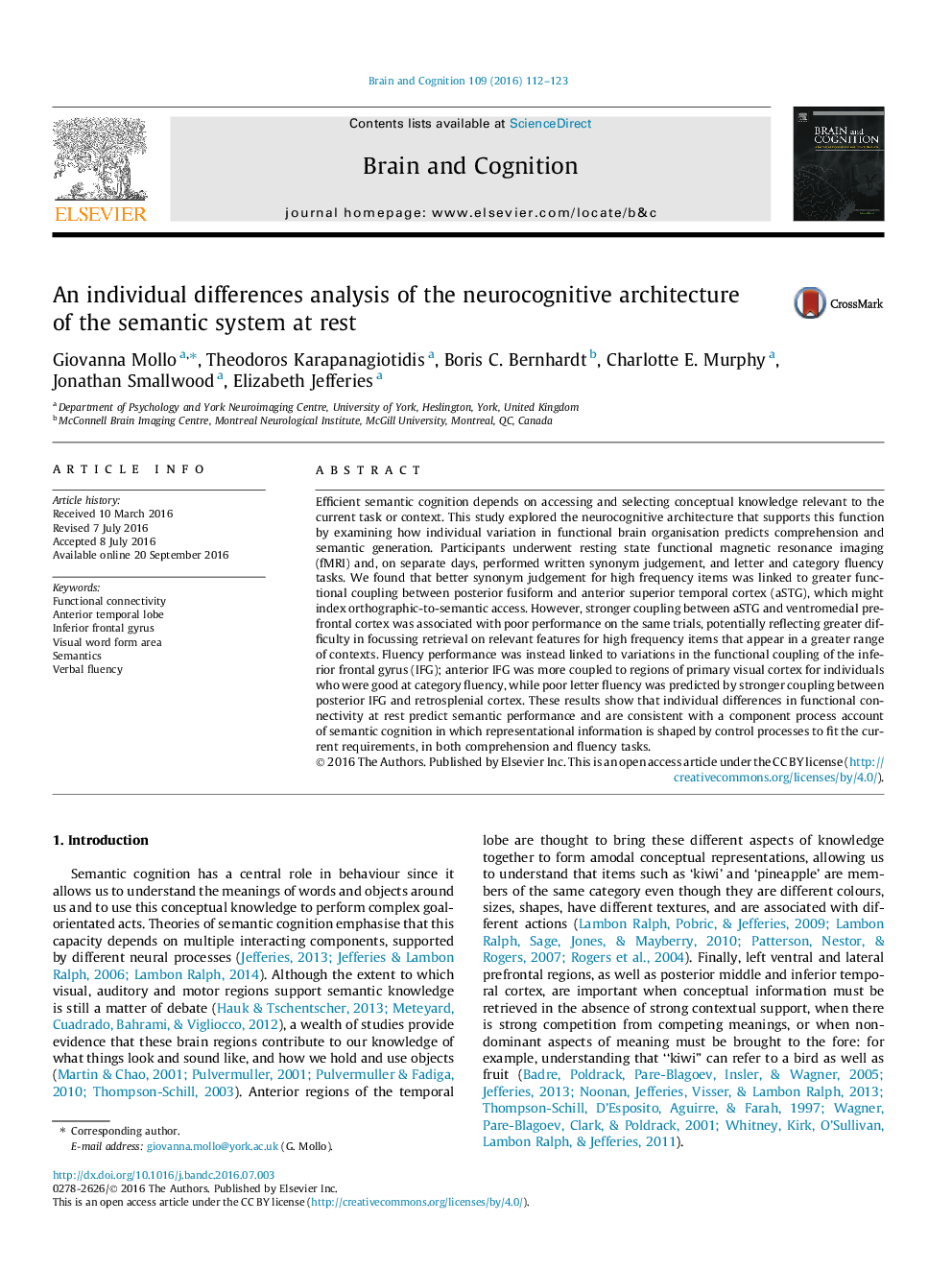| کد مقاله | کد نشریه | سال انتشار | مقاله انگلیسی | نسخه تمام متن |
|---|---|---|---|---|
| 5041172 | 1473962 | 2016 | 12 صفحه PDF | دانلود رایگان |
- Variations in semantic performance are reflected in resting-state networks.
- Inferior frontal connectivity predicts verbal fluency performance.
- Connectivity between visual and anterior temporal areas predicts synonym judgement.
Efficient semantic cognition depends on accessing and selecting conceptual knowledge relevant to the current task or context. This study explored the neurocognitive architecture that supports this function by examining how individual variation in functional brain organisation predicts comprehension and semantic generation. Participants underwent resting state functional magnetic resonance imaging (fMRI) and, on separate days, performed written synonym judgement, and letter and category fluency tasks. We found that better synonym judgement for high frequency items was linked to greater functional coupling between posterior fusiform and anterior superior temporal cortex (aSTG), which might index orthographic-to-semantic access. However, stronger coupling between aSTG and ventromedial prefrontal cortex was associated with poor performance on the same trials, potentially reflecting greater difficulty in focussing retrieval on relevant features for high frequency items that appear in a greater range of contexts. Fluency performance was instead linked to variations in the functional coupling of the inferior frontal gyrus (IFG); anterior IFG was more coupled to regions of primary visual cortex for individuals who were good at category fluency, while poor letter fluency was predicted by stronger coupling between posterior IFG and retrosplenial cortex. These results show that individual differences in functional connectivity at rest predict semantic performance and are consistent with a component process account of semantic cognition in which representational information is shaped by control processes to fit the current requirements, in both comprehension and fluency tasks.
Journal: Brain and Cognition - Volume 109, November 2016, Pages 112-123
